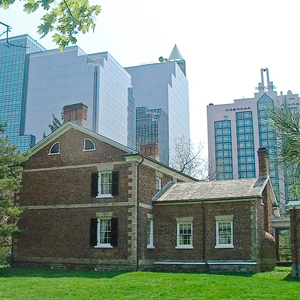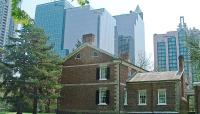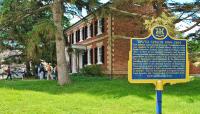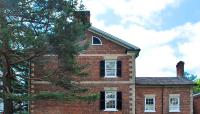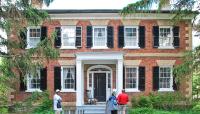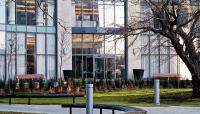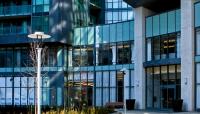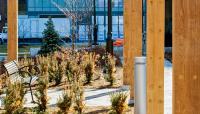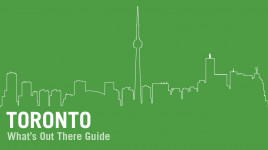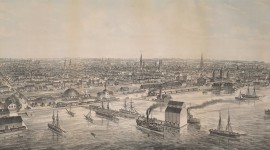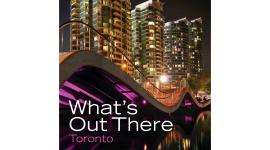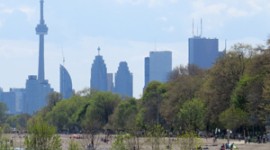Built and inhabited by David and Elizabeth Gibson in 1851, this Georgian Revival farmhouse was built facing Yonge Street, and is one of the few remnants of the nineteenth-century community of Willow Dale (originally known as Cummer’s Settlement) in North York. A Scottish immigrant, David Gibson acquired the 42-hectare farm between Yonge Street and Bathurst Street in 1829, and worked as a surveyor, planning many of the sidewalks and roads of early Toronto. Caught up in the Upper Canada Rebellion of 1837, the Gibsons fled to the U.S., and returned to re-build their home in 1848 (the original wood-frame farmhouse was burned by government soldiers). By 1913 the farmstead had been sold and sub-divided, except for a plot at the southeast corner containing the brick farmhouse, which was acquired by the Township of North York in 1965, and subsequently opened as a museum and a city park.
Spanning the edge of the city block to the south, and divided between two parcels, is Gibson Park, which was redesigned by NAK Design Group in 2011 in conjunction with the development of two condominium towers. The park’s eastern parcel contains a Tolman Sweet apple tree, the last of the Gibson orchard planted in 1832. A wide walkway along Park Home Avenue passes the entrance to an underground parking garage and leads to the western parcel, where a number of art installations recall the Gibson farmstead and nineteenth-century life, including photographic etchings on slabs of black granite, and a surveyor’s chain and equipment.




